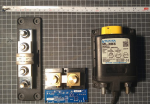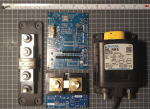vas
Well-Known Member
I'll keep the bulky one for a future solar installation at home. Got around 20sqm to fill with panels 
on a more serious note, I guess all of you fit the fuse on the positive side and close to the bank, right?
Was hoping to bolt the fuse housing on the positive side compression endplate but it's too bulky tbh!
hm, and another Q, you do power the BMS from the bank before the fuse, right?
V.
on a more serious note, I guess all of you fit the fuse on the positive side and close to the bank, right?
Was hoping to bolt the fuse housing on the positive side compression endplate but it's too bulky tbh!
hm, and another Q, you do power the BMS from the bank before the fuse, right?
V.
Last edited:



